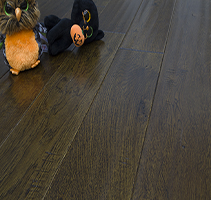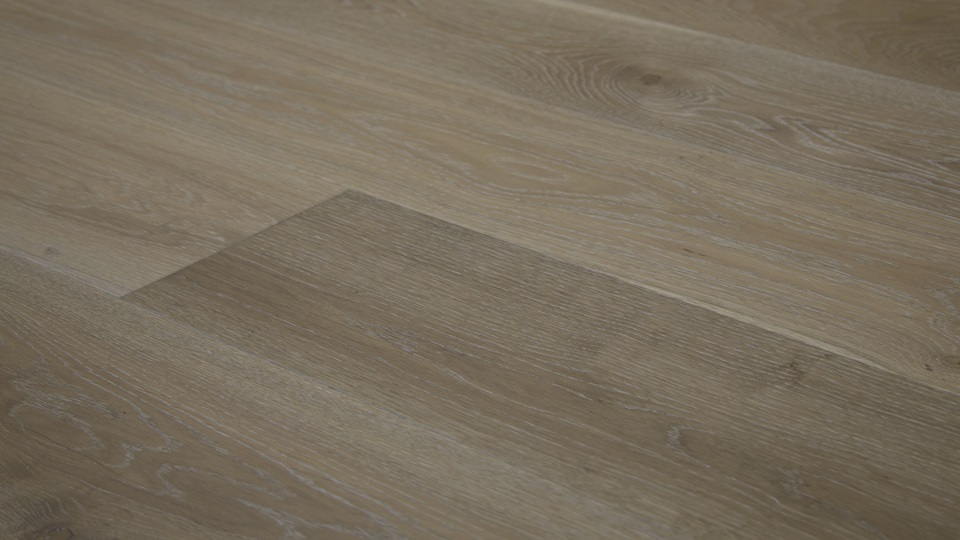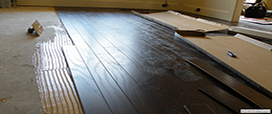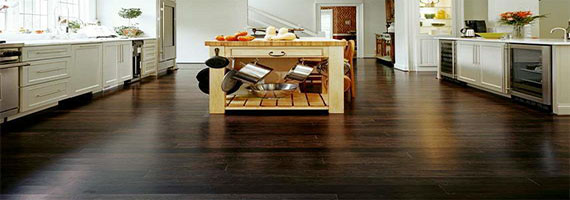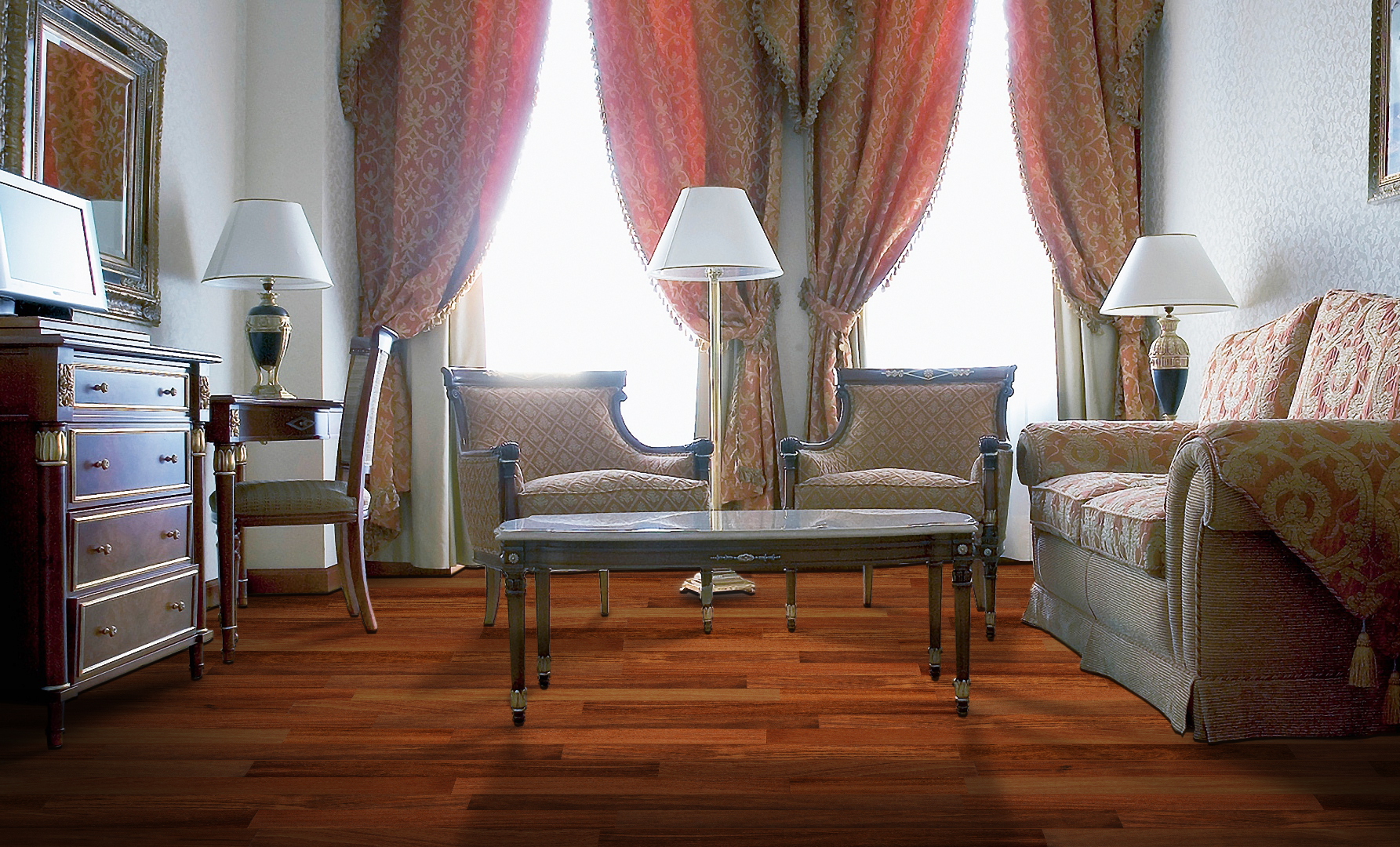
Learn About Hardwood Basics Learn more
Solid and Engineered Maintenance
Hardwood Solid and Engineered Flooring Care and MaintenanceNecessary steps for the long term performance of your FERMA hardwood flooring:
- Vacuum the floor frequently to eliminate the presence of solid particles (such as sand) which may damage and/or scratch the floor. (Caution: only use vacuum machine that is good for hardwood floor. The wheels of vacuum cleaner should be in good condition and cleaning accessories must be free of all abrasive particles that could scathe the finish).
- Lightly spray the cleaner on a five square foot section of the floor. Never pour liquid directly onto the floor.
- Swiftly wipe the surface of the floor with the mop using a to and fro motion across the length of the floorboards. Follow the directions for use, from the manufacturer of the cleaning product selected, for urethane finished flooring . Caution: Use non-wax flooring cleaner to keep the floor in good condition; The use of ammonia is not recommended as it can discolor hardwood floor also it is very harsh on finishes; Use of vinegar is not recommended. It is an acid that can etch the finish and create a dull look; Use of any oil soap product is not recommended as it usually leaves a residue that can be sticky and difficult to remove as well as attracting dirt. The use of silicon products and wax is not recommended. Use a cleaner developed specifically for urethane finishes.
- The use of microfiber or terry cloth mop heads is recommended.
- Routine maintenance would include not only sweeping, but vacuuming and dust mopping. Caution: Do not use a treated dust mop. (Mop treated with silicone, wax or other treatments may damage your wood floor finish) Never wet mop a hardwood floor as excess water may harm hardwood floor and could cause premature wear. Wet mopping will void your warranty. Do not use 2 in 1 cleaners with polish that may contain acrylics or urethane polish to restore gloss – the use of these products will void the finish warranty and may produce unsatisfactory results when not applied properly.
- Use area rugs in high traffic areas and pivot points.
- Use of felt protectors under chairs or furniture is recommended. When moving heavy furniture (fridge, piano, etc.), Lift the furniture, and do not slide or drag across the flooring. If lifting is not possible, use protected plywood sheets, or equivalent and dollies, or place a thick rug underneath furniture legs before moving. What to use would depend on what you are moving. Use common sense, and protect your floors.
- Check shoes regularly as a protruding nail from a worn or lost heel can scratch and puncture a floor. If you have pets, check their nails on a regular basis.
- Use of rugs or mats at all entrances. Removal of dirt and grit before it gets on the floor is best. Shake out and wash rugs and mats as necessary.
- Routine maintenance would include not only sweeping, but vacuuming and dust mopping. Caution: Do not use a treated dust mop. (Mop treated with silicone, wax or other treatments may damage your wood floor finish) Never wet mop a hardwood floor as excess water may harm hardwood floor and could cause premature wear. Wet mopping will void your warranty.
- Use of felt protectors under chairs or furniture is recommended. When moving heavy furniture (fridge, piano, etc.), place a thick rug underneath furniture legs before moving.
- Check shoes regularly as a protruding nail from a worn or lost heel can scratch and puncture a floor. If you have pets, check their nails on a regular basis.
- Although manufacturers’ finish delays and reduces most of the sun shading phenomenon that causes hardwood to darken and or lighten over time, your floor needs to be protected from sunlight and intense artificial lighting to reduce discoloration of exposed bamboo. This phenomenon with hardwood surfaces is normal and natural. Because hardwood floor shrink and expand with changes in humidity, some control of interior humidity should be in place to minimize the changes. This is part of hardwood floor maintenance.
Required environmental conditions at all times: Average temperature: 68F to 72F Average relative humidity: 35% – 55%
Care and Maintenance
Cleaning wood floors is easy. Regular maintenance includes sweeping with a soft bristle broom or dusting with a dry microfiber mop. If the floor has beveled edges, vacuum with the beater bar turned off to remove dust from between the floor boards. Clean the floors periodically with a professional wood floor cleaning product.
Use a cleaner developed specifically for urethane finishes.
Recommended Maintenance Schedule
- Daily: Sweep or dust mop
- Weekly: Vacuum using the bare floor setting
- Monthly: Clean with recommended wood flooring cleaner
To keep wood floors looking and performing well for generations, follow these guidelines. Individual maintenance schedules will vary depending on use, wear and tear, and lifestyle. There are other steps that can help maintain the beauty of wood floors.
- Do not use vinyl or tile cleaning products on wood floors. Self-polishing acrylic waxes cause wood to become slippery and appear dull quickly.
- Floor mats are a wonderful thing when it comes to hardwood floors. Tiny particles, like dirt, can act like sandpaper and scratch your wood. By placing a floor mat at each entryway and encouraging family members and guests to wipe their feet, the majority of dirt and grime will remain on the mat. Also put a floor mat or rug in any area where water could be splashed — like near the kitchen sink. This will hinder any possible water damage.
- Note that rubber-backed or non-ventilated floor mats or rugs can damage your floor. Many area rugs have backings that grip the floor but are unkind to wood floor finishes. The plasticizers in the backings actually damage the finish; it’s a chemical change that will create a pattern you will see on the floor. Only rugs with a natural backing are safe to use on a wood floor, or rug underlayment designed specifically for use with prefinished urethane hardwood floors.
- Wood is a natural product, and as it oxidizes and is exposed to light, it changes color. Some species- Brazilian cherry and others, especially exotics—are known to change color drastically. There is no way to prevent this, although waiting as long as possible (ideally, at least six months) after the floor is installed to place rugs can help. So can moving area rugs from time to time. If you already have distinct lines on the floor, though, there isn’t usually a quick fix to remove them (even resanding won’t always remove the color difference). The unexposed part of the floor will eventually “catch up” to the rest of the floor, if you leave it exposed.
Hardwood flooring that is installed in the kitchen should be protected in areas subject to cooking splatter, spills and water splashes. High quality throw rugs with a soft felt backing, or other approved backing for use with hardwood floors, should be placed in front of the cook top, oven, sink and dishwasher to protect the flooring finish.
- Do not wet-mop or steam mop a wood floor. Water and steam can dull the finish and even damage the wood.
- Clean sticky spots with a damp towel or sponge. Minimize water exposure and clean spills immediately, and dry immediately.
- Always avoid allowing liquids to stand on your hardwood floor.
- Put stick-on felt protectors under the legs of furniture to prevent scuffing and scratching. Replace these often as dirt and debris can become imbedded on the pad and act like sand paper on the flooring surface.
- Avoid walking on your wood floors with sports cleats and high heels in disrepair, or other that may cause indentation in the flooring. A 125-pound woman walking in high heels with an exposed heel nail can exert up to 8,000 pounds per square inch. This kind of impact can dent any floor surface. Stiletto heels may cause denting in your wood flooring, as is not a warranty item covered.
- When moving heavy furniture, do not slide it on wood flooring. It is best to pick up the furniture to move it and to prevent scratches.
- For wood flooring in the kitchen, place an area rug at the kitchen sink.
- Use a humidifier throughout the winter months to minimize gaps.
Required environmental conditions at all times: Average temperature: 68F to 72F and average relative humidity: 35% – 55%
Keep in mind that no two floor boards will be identical. Variations in appearance are normal. As the floor ages, some color change can occur. This also is normal, but can be minimized by limiting exposure to direct sunlight, and periodically moving furniture and rugs. Seasonal humidity changes may cause the wood to expand and contract. Gaps are normal and will appear and disappear between floor boards during seasons of high and low humidity. Flooring inspectors recommend inspecting the floor from a standing position in normal lighting to identify irregularities.
Moisture Management
- If wood gains or loses too much moisture, problems can occur.
- Wood that gains too much moisture can cup. Cupping occurs across the width of a floor board, with edges that are raised on each board and centers that are lower than the edges. Cupping always happens due to a moisture imbalance through the thickness of the board.
- Wood that loses too much moisture can gap. Gapping occurs between floor boards. Gaps can vary in size and are considered normal if they appear and disappear during seasonal changes in humidity. Gaps are not considered normal if they are large or do not close during more-humid months. FERMA Flooring cannot warrant natural wood flooring characteristics such as checking along the boards. These are small cracks that may develop due to wide fluctuations in temperature and humidity.
- These issues can be minimized by maintaining an environment that is consistently between 68-72 degrees Fahrenheit, and 35-55% humidity. Significant fluctuations outside these ranges can result in cupping, crowning, cracking, checking or gaps. Use a humidifier throughout the winter months to minimize gaps. During nonwinter months, it is recommended to use air conditioning, or a dehumidifier as needed, to maintain recommended humidity conditions of 35 to 55%.
Color Changes
- Different species of wood flooring will experience color changes at different rates. In general, more-common species such as oak and hickory will experience minimal color change over time, while exotic species, such as Brazilian cherry, and Tiger wood, will show more color change over time. These changes are natural and not a defect. Wood is a natural product, and as it oxidizes and is exposed to light, it changes color. Some species including— Brazilian cherry, Brazilian Tiger wood, and others, especially exotics—are known to change color drastically. There is no way to prevent this, although waiting as long as possible (ideally, at least six months) after the floor is installed to place rugs can help. So can moving area rugs from time to time. If you already have distinct lines on the floor from rugs, or other items, there isn’t usually a quick fix to remove them (even resanding won’t always remove the color difference). The unexposed part of the floor will eventually “catch up” to the rest of the floor. It is a natural occurrence inherent in wood, these warranties do not cover damage or color change from the sun and its UV rays.
- Over time, prolonged sun exposure will cause wood floors to change color. Window treatments are recommended to shade your floors from the sun’s harsh UV rays. We also recommend rotating area rugs and furniture regularly, allowing hardwood floors to age evenly from UV exposure.
- The Warranty does not cover natural color changes in the wood or finish, indentations, and/or scratches.
- Pets: Trim your pet’s nails regularly and keep any and all other sharp objects away from your wood floors. Also, pet water and food bowls should not be placed directly onto a hardwood floor. Pet urine should be wiped up immediately and then wipe the area with a clean damp cloth.
- Stiletto heels, or high heels may cause denting in your wood flooring, as is not a warranty item covered.
Radiant Heat Installation: Only for engineered oak models: 7309-N.9309-B, 7409-EG, and 7409-CD
- The minimize the effect that rapid changes in temperature will have on the moisture content of the wood floor, NWFA recommends that an outside thermostat be installed. If one is not present, suggest to your customer that this should be considered. Unlike conventional heating systems, which switch on as needed, radiant systems work most effectively and with less trauma to the wood floor if the heating process is gradual, based on small incremental increases in relation to the outside temperature.
- The maximum allowable subfloor temperature is 85 F (29.44C).
- Expect some heating season shrinkage.
- Radiant heat is the dry heat. A humidification system may be necessary to maintain wood flooring in its comfort zone.
- The engineered oak models listed, can only be installed using hot water radiant heat systems only, and not Electric radiant heat pads.
- All other care and maintenance instructions mentioned above, also apply.
- Hydronic systems must include in-floor temperature sensors and an outdoor thermostat that allows the system to adjust the water temperature according to anticipated heat loss. Radiant heat contributes to the drying out of all woods.
- Only low temperature radiant heating systems with accurate control systems that assure that the floor’s surface temperatures never exceed 80°F are allowed. • The entire floor area must be evenly heated. Even with perimeter heating systems the floor’s surface temperature must never exceed 80°F. The use of a humidification system is recommended, as to not to loose excessive moisture in the wood flooring.
- Setting The Heating system For Installation • System must be fully operating at normal temperature for a minimum of 21 days prior to floor installation. • The heating system must be turned off 24 hours prior to installation and must remain off for 24 hours after installation. • Starting 24 hours after completion of installation, turn on the heating system and gradually increase the temperature over a 7-day period to norm.
- Maximum allowable wood surface temperature is 80° Fahrenheit.
- Note that rugs can increase surface temperatures 5° Fahrenheit or more. Do not use area rugs on top of engineered flooring installed over radiant heat systems. Area rugs trap heat creating elevated temperatures capable of damaging engineered flooring.
- Maintain 45-60% humidity in radiant heated rooms at all times. If necessary, use humidifiers. • Room temperature should not vary more than 15° Fahrenheit season to season, Small surface splits (checking), particularly at the ends of planks, should be expected with installations over radiant heat and does not constitute a product failure.
- Small surface splits (checking), particularly at the ends of planks, should be expected with installations over radiant heat and does not constitute a product failure.
- A strange phenomenon that can happen with radiant heated floors is color change directly over the tubes. This typically happens with oily woods, including many exotics, such as rosewood or teak. Over the years, the difference in heat exposure directly over the tubes compared with the rest of the floor causes a color change in the warmer areas, which usually turn darker, revealing the exact pattern of the tubes. This is a change that cannot be sanded out of the floor, and is not a manufacturing defect, and is not covered by the FERMA Flooring Warranty
Solid and Engineered Maintenance Download
